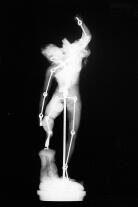Historical pyrite “mirrors” from the Ecuadorian Cañari culture, digital microscopy observations, mineralogical and elemental analysis
Résumé
This research relies on microscopy and digital microscopy observations and spectral analysis techniques: Raman spectroscopy, laser-induced breakdown spectroscopy (LIBS) and particle-induced X-ray emission (PIXE), to recover part of the lost identity of two pyrite (FeS2) cones. Conserved in Paris, at the Muséum National d'Histoire Naturelle (MNHN), the first one is registered MIN000-3519 in the collection of the mineralogist René-Just Haüy, the second one, registered 105.504, is a stray object. All information related to its origin would have been lost during the move (1837-1841) of the collections from the former Cabinet du Jardin du Roy to the new earth science gallery of the MNHN. Our historical research (Gendron 2022) revealed that the first one, described as an "Inca mirror", was shipped from Peru around 1760 by the botanist Joseph de Jussieu to his brothers Antoine and Bernard. They also confirmed that these two pyrite cones are archaeological objects of the Ecuadorian Cañari culture (500-1500 AD).
Raman analyses conducted on the MIN000-3519 specimen confirm that it was developed on a quartz paragenesis. While the faces observation of no.105.504 reveals that the crystal used for its cut was triglyph twinned, a crystal which must have been cubic or dodecahedral pentagonal. The observation of the technical traces in digital microscopy makes it possible to reconstruct a process of similar cut for the two "mirrors" and help to discover red mineral clusters in the bottom of the crystalline gaps. LIBS analyses were also applied to get complementary information on in-depth element distribution, such as Fe and Al, in order to understand the stratigraphy inside the cracks. Finally, PIXE measurements do not confirm that these two pyrites come from the same deposit. But, this analytical technique is hampered by the nature of the element Fe which offers multiple and random bonding possibilities during the crystallization of iron minerals and by the lack of a comparative sample in the Parisian mineralogic collections.
| Origine | Publication financée par une institution |
|---|


